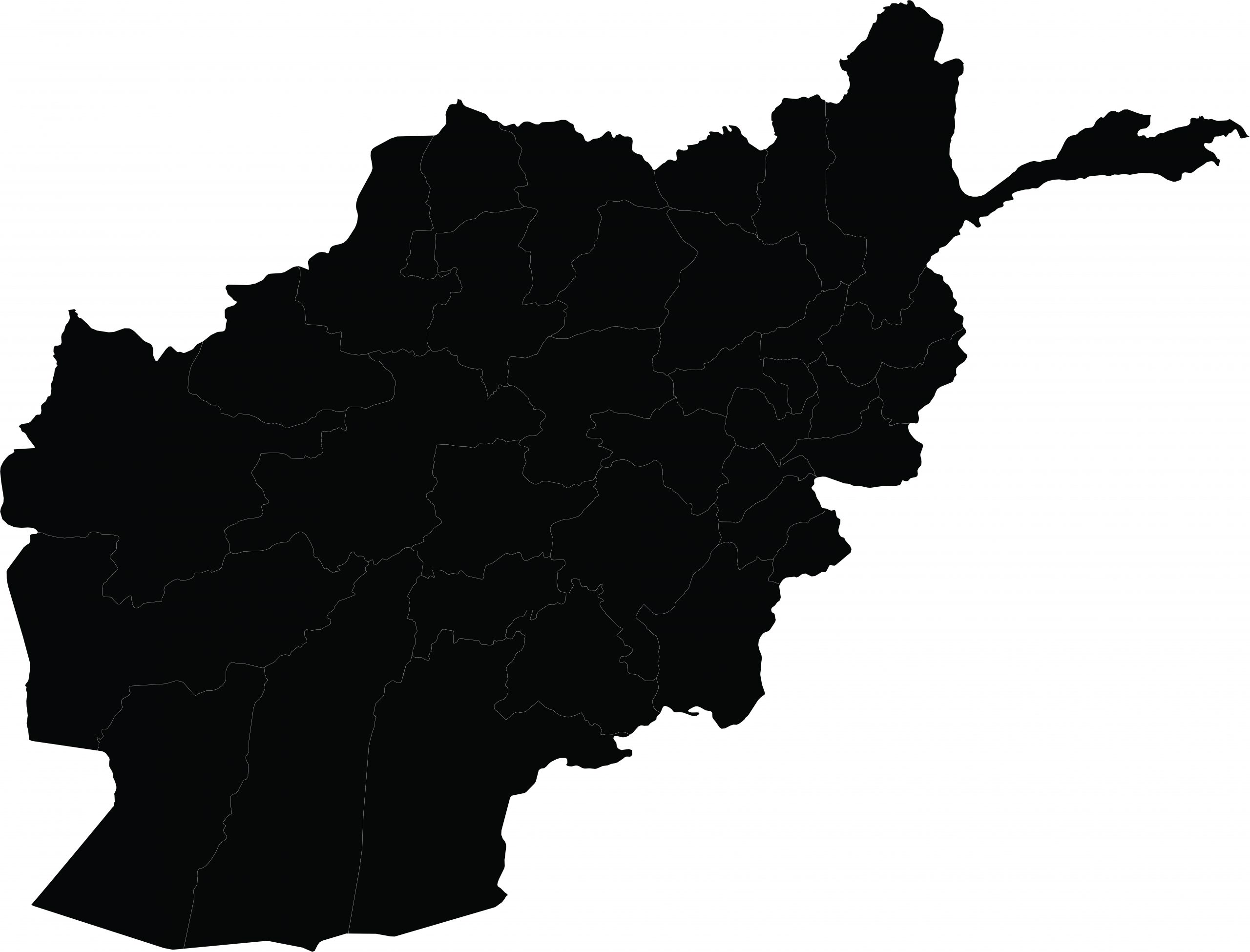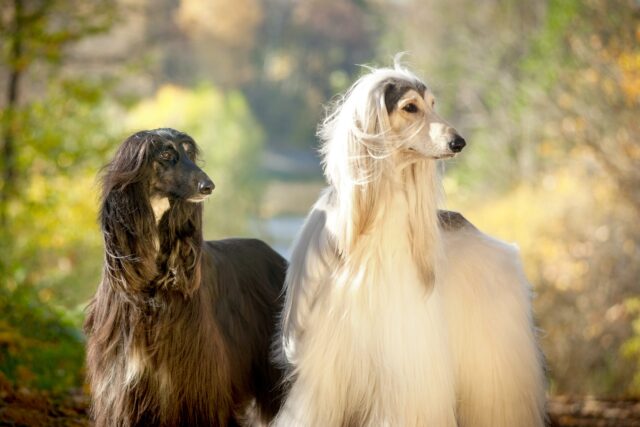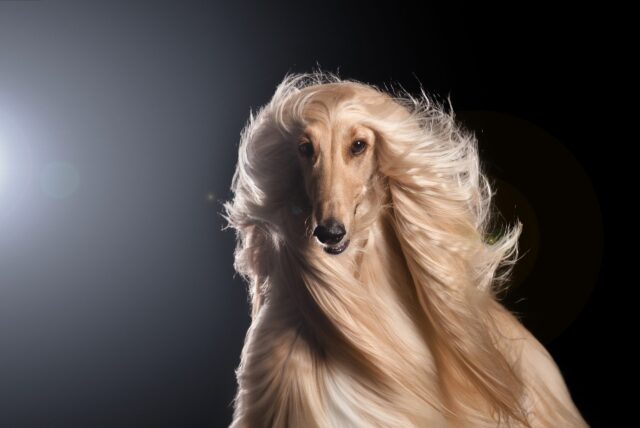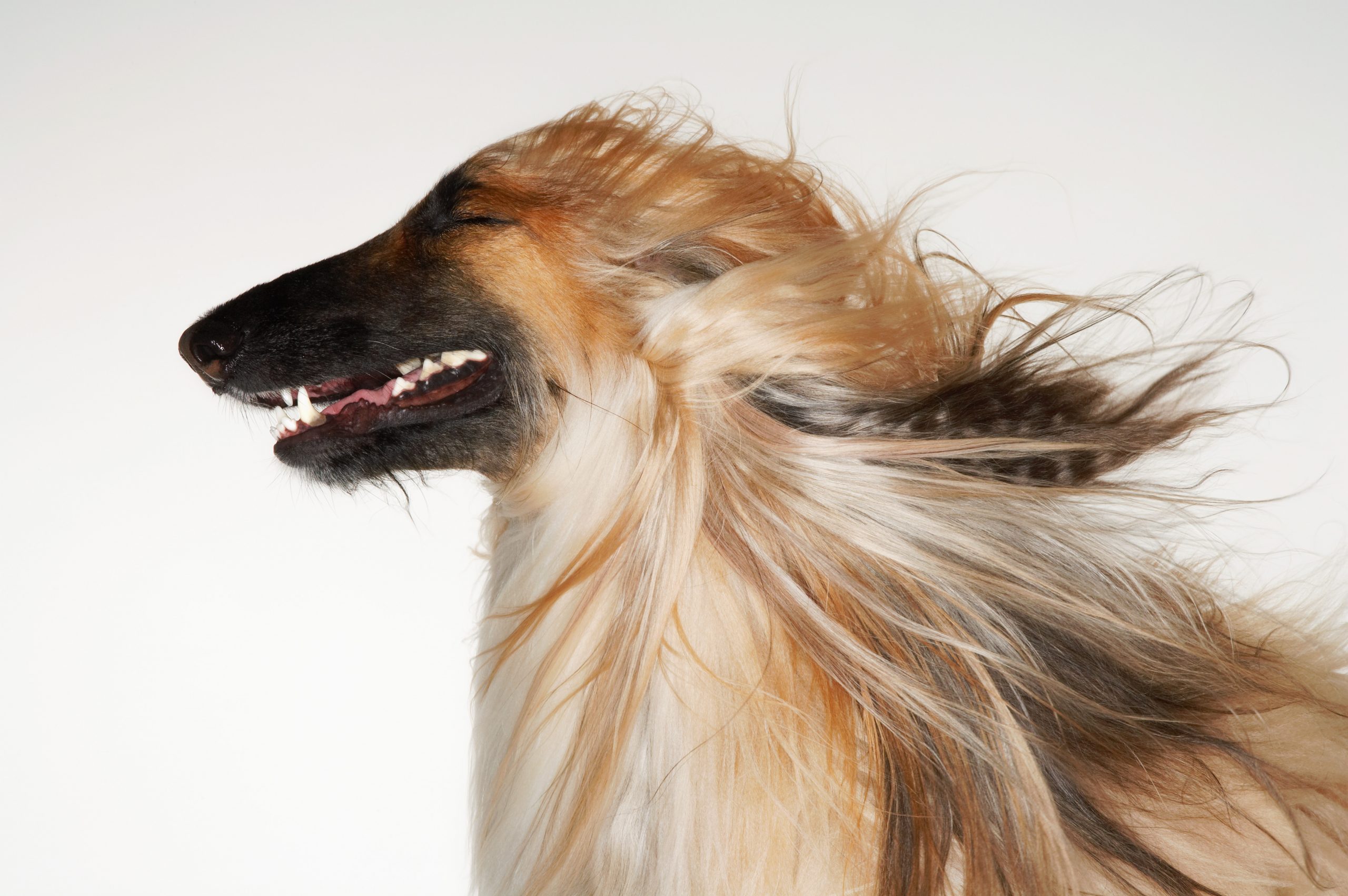Afghan Hound
Showing the single result
Shelter Dog Meal Donation Count:
Showing the single result
The Afghan Hound is an elegant and ancient breed renowned for its regal appearance and flowing, silky coat. Originating from the rugged terrain of Afghanistan, these dogs are prized for their dignified demeanor and swift, agile movements.
This breed is known for its high-maintenance coat, requiring regular grooming. Despite their glamorous appearance, Afghan Hounds were initially bred for their speed and endurance to chase game over rugged terrain, reflecting their strong hunting instincts.

Afghan Hounds are one of the oldest dog breeds, with their lineage dating back thousands of years in the mountains of Afghanistan. They were first brought to England in the early 20th century and quickly gained popularity worldwide for their distinctive beauty and noble demeanor.




Generally healthy but prone to certain conditions like hip dysplasia, cataracts, and heart issues. Regular vet check-ups are essential.
Their long, luxurious coat requires daily grooming to prevent mats and tangles. Regular baths are necessary to keep their coat clean and shiny.
Require ample daily exercise like long walks or jogs. Enjoy having space to run in a secure area.
Training can be challenging due to their independent nature. Positive reinforcement methods work best, along with patience and consistency.
A well-balanced diet is crucial. Portion control is essential to prevent obesity, especially since they enjoy a less active lifestyle in their senior years.
Caring for an Afghan Hound requires time and dedication, especially in grooming and exercise. However, for those willing to invest the effort, these dignified, elegant dogs can make a loving and fascinating addition to the family.
Like all breeds, Afghan Hounds have specific health issues that they are more predisposed to. Awareness of these common health issues and recommended tests can help owners ensure their pets live healthy and happy lives.
Regular veterinary check-ups and maintaining a healthy lifestyle can help prevent or manage these conditions. It's also crucial to purchase Afghan Hounds from reputable breeders who perform health screenings on their breeding animals to reduce the risk of hereditary diseases.
The iHeartDogs Free Rx Discount Card Program is a pet prescription discount card that can help you save money on your furry friend’s medications. The card is free to sign up for, and you can use it at participating pharmacies nationwide. To use the free program, simply show the card to your pharmacist when you pick up your pet’s prescription. The pharmacist will then scan the card, and you will receive a discount on the price of the medication.LEARN MORE
The annual cost of caring for an Afghan Hound, like any pet, can vary widely depending on location, the individual dog’s health and needs, and the level of care provided. However, I can give a general breakdown of the expenses of caring for an Afghan Hound.
Total Estimated Annual Cost:
$4050 - $9100
It's important to note that these figures are estimates and can vary. Also, the first year of owning a dog can be more expensive due to one-time costs like spaying/neutering, initial vaccinations, and training. Regular budgeting for your dog's needs and an emergency fund for unforeseen costs are essential for responsible pet ownership.